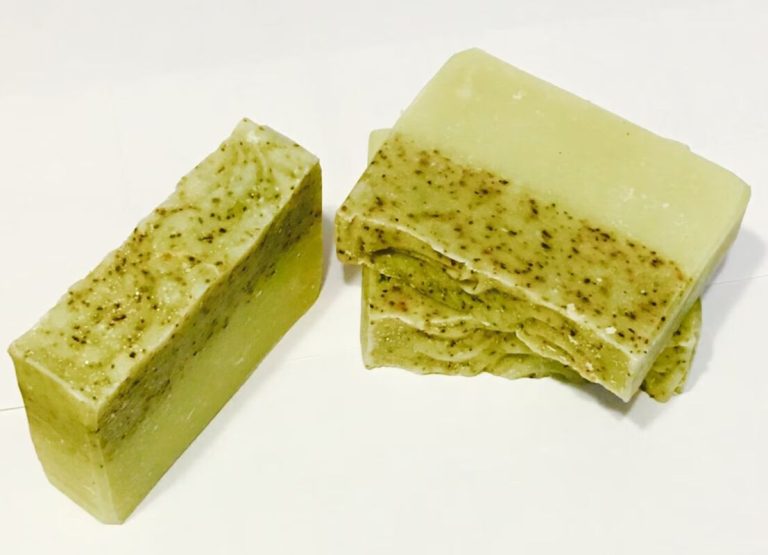Alpha Arbutin vs. Azelaic Acid: What’s The Difference?
If you’re struggling with hyperpigmentation, acne scars, or an uneven skin tone, you’ve likely come across alpha arbutin and azelaic acid in your research for solutions. Both of these ingredients are commonly used to treat dark spots and pigmentation issues. But what exactly is the difference between alpha arbutin and azelaic acid? Which one should you choose to target your specific skin concerns?
I’ve dealt with acne scarring and melasma myself, so I understand the frustration of trial and error to find products that work. In this article, I’ll break down everything you need to know about the similarities and differences between these two Lightening and brightening powerhouse ingredients.
What is Alpha Arbutin?
Contents
- What is Alpha Arbutin?
- What is Azelaic Acid?
- Alpha Arbutin vs. Azelaic Acid: How Do They Compare?
- Using Alpha Arbutin and Azelaic Acid for Hyperpigmentation
- Azelaic Acid for Acne Scars and Redness
- Combine Alpha Arbutin and Azelaic Acid for Maximum Results
- FAQs: Azelaic Acid vs. Alpha Arbutin
- The Takeaway: Choose the Best Acid for Your Skin Goals
Alpha arbutin is a naturally derived active ingredient that comes from the bearberry plant. It’s consider a hydroquinone alternative that inhibits tyrosinase. Tyrosinase is an enzyme involved in melanin (pigment) production. By inhibiting tyrosinase, alpha arbutin blocks new melanin formation which results in a brightening and evening effect on the skin.
Other sources of alpha arbutin include blueberry extracts and most types of mushrooms. Many skin lightening products use a synthetically created version of alpha arbutin.
The main benefits of alpha arbutin for the skin include:
- Fading hyperpigmentation and melasma
- Preventing new dark spots from forming
- Brightening dull skin
- Reducing the appearance of acne scars
- Improving uneven skin tone
- Even color correction for face and body
- Wound healing and reducing inflammation
- Gentle enough for sensitive skin
As you can see, alpha arbutin works well for most types of hyperpigmentation. It also has the ability to protect skin from UV damage that could otherwise trigger more melanin production and future dark spots.
What is Azelaic Acid?
Unlike alpha arbutin, azelaic acid is not a plant derivative. It’s a naturally occurring acid that is produced by a yeast that lives on normal skin. Azelaic acid is also found in wheat, rye and barley.
Synthetic azelaic acid is used in over-the-counter skincare products in concentrations of 10-20%. It offers a multitude of benefits for various skin issues.
Here’s an overview of how azelaic acid works to improve skin health:
- Antibacterial properties treat acne-causing bacteria
- Reduces inflammation and redness
- Helps exfoliate dead skin cells through keratolytic action
- Reduces sebum/oil production
- Improves texture and smooths bumps
- Fades acne marks and melasma
The main differences of azelaic acid are its effectiveness for treating acne and rosacea. It also physically exfoliates the skin through its keratolytic properties which alpha arbutin does not offer.
Let’s look more closely at how these ingredients are similar and different.

Alpha Arbutin vs. Azelaic Acid: How Do They Compare?
While both alpha arbutin and azelaic acid treat discoloration, their composition and mechanism of action differ.
Composition:
- Alpha arbutin – naturally derived from bearberry plant
- Azelaic acid – naturally occurring acid produced by yeast in the skin
Mechanism of action:
- Alpha arbutin – Inhibits tyrosinase to block melanin production
- Azelaic acid – Multiple mechanisms: exfoliates dead skin, reduces inflammation, and more
Azelaic acid has the advantage of fighting acne thanks to its anti-bacterial and keratolytic exfoliating properties. It treats the acne-causing bacteria itself along with the resultant pigmentation.
Alpha arbutin is limited to solely inhibiting melanin with its effects on tyrosinase. It does not exfoliate or have anti-bacterial benefits.
However, alpha arbutin is generally accepted as safer for sensitive skin. Azelaic acid has the potential to cause dryness, stinging, and irritation due to its exfoliating action.
Using Alpha Arbutin and Azelaic Acid for Hyperpigmentation
If your main skin concern is hyperpigmentation without active acne, alpha arbutin may be the better choice. It’s focused specifically on lightening pigmented areas and age spots.
In a comparative clinical trial, a formula with alpha arbutin showed better efficacy for treating hyperpigmentation related to photo-aging. It outperformed kojic acid for inhibiting melanin production.
Alpha arbutin is also considered very safe for long-term use. Since it’s derived from a naturally occurring compound, the risks of allergic reaction or sensitivity are quite low.
Using a gentle cleanser with alpha arbutin in both the morning and evening will provide consistent brightening and lightening results over time. Just be patient as it may take up to 3 months for more stubborn dark spots to fade.
I’ve personally had the best luck using an alpha arbutin serum day and night. After cleansing, I apply a few drops all over my face before my moisturizer. My melasma has truly faded so much after consistent use!
Azelaic Acid for Acne Scars and Redness
Those dealing with active breakouts and the resultant scarring have more to gain from azelaic acid’s multifaceted approach. It smooths bumpy texture while killing acne bacteria.
Azelaic acid is considered pregnancy safe and well-tolerated by most. But it does have the potential to irritate and dry out the skin more so than alpha arbutin.
If you have sensitive skin, azelaic acid may not be right for your face. However, it’s an excellent option for body acne and scarring on the chest, back, and shoulders. These areas tend to be less sensitive.
When using azelaic acid, stick to once a day application at first. You can work up to twice daily as your skin adjusts. Using azelaic acid after washing and before heavier creams helps prevent excess dryness.
Combine Alpha Arbutin and Azelaic Acid for Maximum Results
Since these two ingredients work differently, you can safely use alpha arbutin and azelaic acid together to maximize your hyperpigmentation and acne scar treatment!
However, I don’t recommend starting both at the same time. Begin with one active ingredient for a few weeks first to see how your skin responds. Then add the other slowly while monitoring for irritation or dryness.
Here’s an effective AM/PM routine combining alpha arbutin and azelaic acid:
Morning:
- Gentle cleanser
- Alpha arbutin serum
- Moisturizer with SPF
Evening:
- Remove makeup and cleanse
- Azelaic acid cream
- Night cream
Using azelaic acid at night gives it time to work its exfoliating magic while you sleep. Alpha arbutin can be applied under sunscreen in the morning without any photosensitivity concerns.
FAQs: Azelaic Acid vs. Alpha Arbutin
Is alpha arbutin better than azelaic acid for hyperpigmentation?
For hyperpigmentation specifically, alpha arbutin has the advantage. It works solely to inhibit melanin production. Azelaic acid helps too but is more beneficial for acne sufferers.
What percent alpha arbutin is most effective?
Look for alpha arbutin at 3-4% concentration. Lower amounts like 1% can still provide skin brightening but may take longer. Higher concentrations don’t provide additional benefit.
Does azelaic acid help with dark spots?
Yes! Azelaic acid improves hyperpigmentation through exfoliation to reveal fresh skin along with some tyrosinase inhibition like alpha arbutin.
Is azelaic acid good for acne scars?
One of the top benefits of azelaic acid is reducing the appearance of acne scarring. It helps heal and fade post-acne marks left behind.
The Takeaway: Choose the Best Acid for Your Skin Goals
Hopefully you now have a better understanding of how alpha arbutin and azelaic acid compare for improving different pigmentation issues. The key is choosing the ingredient that targets your primary skin concerns.
Alpha arbutin is the top pick solely for hyperpigmentation, melasma, and uneven skin tone. It gently blocks melanin production to fade dark spots but does not offer exfoliation.
Azelaic acid is the MVP for tackling acne breakouts while also fading the resultant red or brown marks. Its antibacterial and renewing properties keep active acne at bay.
Those with both lingering acne scars and hyperpigmentation can benefit from combining both ingredients. Just be sure to introduce them slowly to avoid irritation.
With consistent use of the right acid for your skin, you’ll finally see those stubborn spots and marks fade away for a beautifully clear and radiant complexion. Let me know how alpha arbutin or azelaic acid works for your pigmentation in the comments!

Founded by Sophia Rodriguez, IGXO Cosmetics is a PETA-certified, cruelty-free, and vegan makeup brand.





